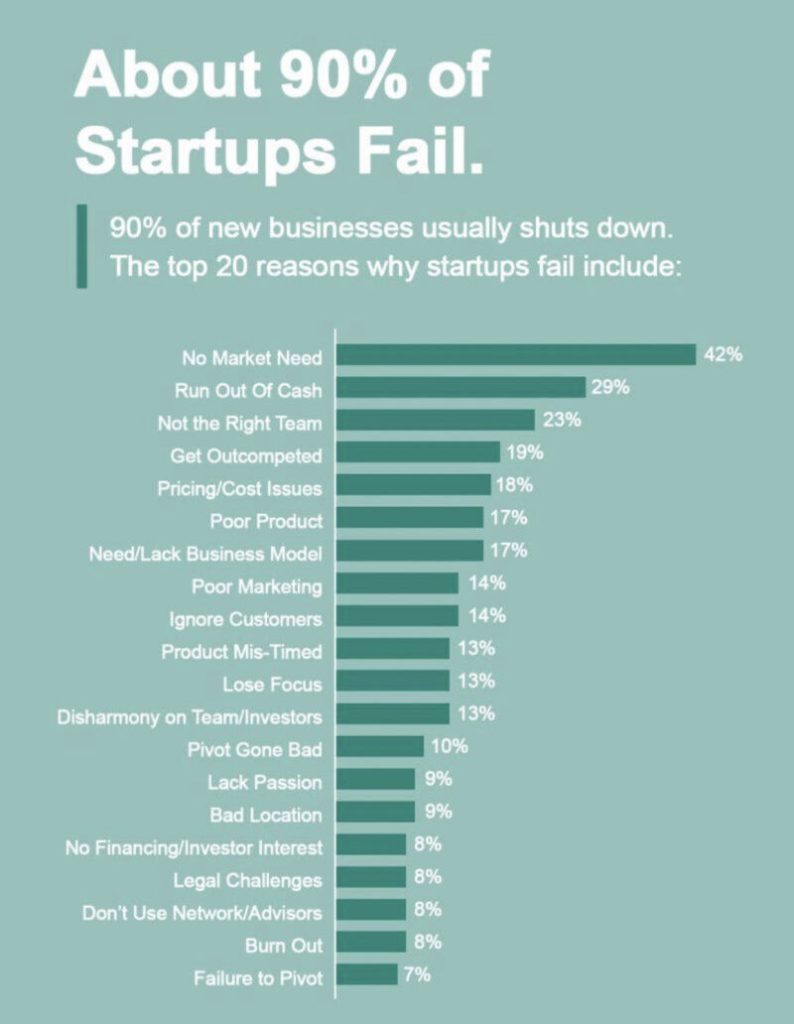Validating your business idea is a crucial element of entrepreneurship. However, many entrepreneurs make these common mistakes during the validation process which results in misguided decisions. In this article, we will explore 10 common mistakes entrepreneurs make when validating ideas and offer practical tips to avoid them.
What Is Business Idea Validation
Business idea validation is the process of evaluating the viability of a new business idea before investing substantial time and resources in its development. It involves extensive study and analysis to establish whether the proposed idea has the potential to scale in the marketplace. The primary purpose of idea validation is to reduce the risks associated with establishing a new enterprise by making informed decisions based on facts and feedback.
TLDR: Common Mistakes Entrepreneurs Make Validating Their Business Ideas
- Ignoring Web Data or Trends
- Relying on Self-Validation
- Being Unaware of Confirmation Bias
- Neglecting Market Research
- Not Asking the Right Questions
- Rushing the Validation Process
- Assuming Everyone Is Their Customer
- Neglecting Regulations
- Using a Single Method to Validate Your Idea
- Ignoring Opportunities to Pivot
Ignoring Web Data or Trends
Many entrepreneurs make the mistake of just ignoring web data due to preconceived beliefs, biases, or a desire to see their business idea succeed. Data can reveal market opportunities and help you focus your time and energies where it’s most valuable. This will prevent you from pursuing ideas without considerable market demand or need.

Relying on Self-Validation
Another common mistake is relying on your instincts and biases to validate your business idea. While your intuition is important, keep in mind that your personal choices may differ from the demands and preferences of the larger market. Instead of self-validation, survey potential customers, key opinion leaders or industry experts. Moreover, be open to different opinions about the business idea.
Being Unaware of Confirmation Bias
Confirmation bias is the tendency to seek out, understand, and recall information that validates our preexisting opinions. Entrepreneurs who succumb to confirmation bias during market research focus on evidence that supports their business idea while dismissing or ignoring information that contradicts it. This leads to a distorted view of their venture’s potential. To mitigate this, seek outside opinions. Speak with mentors, advisors, and industry professionals who can provide an objective viewpoint. They can assist you in interpreting data and providing insights that are outside your immediate field of vision. Consider all feedback, good or bad, as valuable. Analyze negative feedback to uncover root causes and areas for improvement.
Neglecting Market Research
Another pitfall is failing to conduct adequate market research. You risk entering a saturated or unprofitable market if you do not have a thorough understanding of the market and competition. Spend time conducting market research to determine your target audience, their pain points, and your competition. Use resources such as Google Trends, industry studies, and market analysis. Look for market gaps where your innovation can provide a unique value proposition.
Not Asking the Right Questions
Asking the right questions is just as critical as finding the right answers. Yet, it is common for many entrepreneurs to either ask the wrong questions or, worse, forget to ask critical questions during customer interviews.
Begin with a specific goal in mind. The purpose of a survey is to gather information; and as far as customer discovery is concerned, you are trying to gather insights to make informed decisions. Knowing your goals will help you draft the right questions for your interviews.
Rushing the Validation Process
Another common mistake is impatience. Entrepreneurs often rush the process in hopes of launching their product or service quickly. However, hastily validating your idea can lead to inaccurate results and missed opportunities. To avoid this mistake, set a realistic timeline for the validation process and stick to it. Allow yourself enough time to collect sufficient data and obtain meaningful insights. Remember to be patient and avoid making premature decisions based on limited feedback.
Assuming Everyone Is Their Customer
Not everyone will be interested in your product or service. Avoid trying to please everyone since it will dilute your attention and resources. Moreover, the wrong customers will provide misleading feedback because they are just not right for your business. Instead, find your niche. Conduct extensive market research to learn about your target customer’s demographics and pain issues. You should then use the information gathered to build a user persona for your product. The right consumers will show real interest in your business idea. They may sign up for newsletters, take part in focus groups or polls, or test prototypes. Active involvement from your target audience is a great indicator that you’ve profiled the right people. Moreover, the right customers will provide helpful and specific feedback that will help refine and improve your idea. Regardless, be willing to pivot your customer type if your initial assumptions were incorrect.
Neglecting Regulations
Ensure that you are aware of any legal or regulatory regulations that may apply to your business idea. Ignoring this can lead to problems in the future. Begin by researching and identifying the specific legal and regulatory requirements that relate to your idea. You can also consult a lawyer who specializes in business law. If your idea is intellectual property, take the required actions to preserve and enforce your rights, using trademarks, copyrights, or patents. Failure to do this may result in legal disputes in the future.
Using a Single Method to Validate Your Idea
It is recommended to use a combination of validation techniques for a more comprehensive understanding of the situation at hand. Surveys work well for gathering quantitative data from a large number of people. They are excellent for measuring opinions and preferences. Interviews provide in-depth qualitative information based on open-ended conversations. They are ideal for delving into customer motivations, attitudes, and pain points. Experiments are another way to validate your ideas. Experiments are useful when you need to establish a cause-and-effect relationship. For example, to test how customers react to a minimum viable product.
Ignoring Opportunities to Pivot
A combination of over-optimism and sunk cost fallacy prevents entrepreneurs from making pivots. The sunk cost fallacy is a cognitive bias that occurs when individuals continue to invest time, money, or resources in a decision or project based on the cumulative investment they have already made, even if the current or future costs clearly outweigh any benefits the product or service can offer.
If the results of your validation studies show that your initial idea isn’t going to be viable, be open to pivoting. Eric Ries explains how start-ups can effectively pivot their ideas, in the book, The Lean Start-Up. Sometimes, you would need to change the product completely. However, validation studies may also reveal other necessary pivots such as:
Channel Pivots
channel pivots involve changing the method of delivery. For example, a shift from building physical stores to online shopping.
Revenue Model Pivot
Switching how the business generates revenue. For example, going from a subscription model to a freemium model based on customer feedback
Olutobi
I write about business and project management.
10+ years working in program management. I've worked in health-tech, community health, regulatory affairs and quality assurance.



